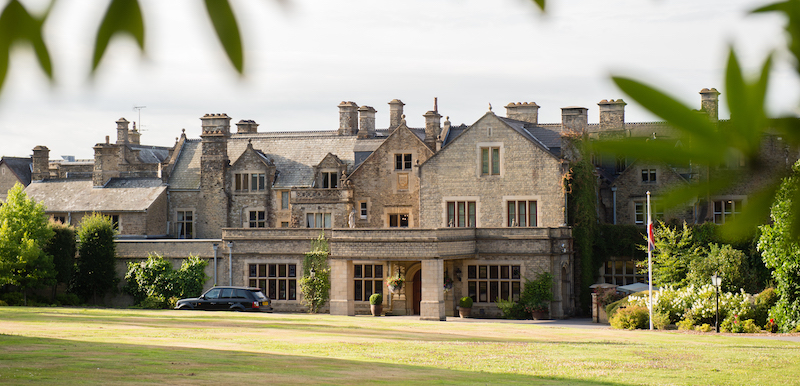
From an early age, Tom was fortunate to have exposure to the creative wonder of quality restaurants. Indeed, his father had a family business that involved significant international travel to America, Europe and Asia where “He might come back from his travels with some extraordinary food products, be it a stick of best quality German marzipan or some obscure but beautiful Japanese bean curd dessert, the likes of either I had never tasted before.”
Tom’s step-grandmother is Japanese, so from an early age he had the opportunity to see and taste some incredible products that broadened his horizons. Always hands on, practical and artistic (also having studied for an art history degree) a natural career step might have involved working with raw materials in some way, in fact the kitchen proved a natural extension to these attributes and a decision from which he and his dining guests have significantly benefited.
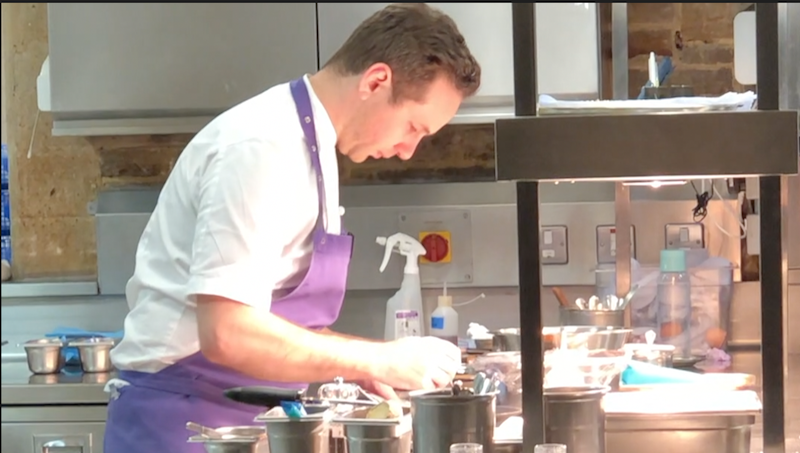
When asked whether cooking is an art or a science, he sees the life of a chef as mastering an artisan craft rather than either an art or science. The concept of becoming a master of the craft extends to a Japanese philosophy called Shokunin. This goes further and deeper than demonstrating mastery of mere skills, it spans the passion, dedication, discipline, ethical and even spiritual nature of the student; continuously inspiring self-evolution, which extends to helping those around you as well as improving self; “I see Shokunin as a guide to my career as well as more broadly in life.”
The first career role in London was at Foliage restaurant at the Madarin Oriental, where he worked (starting as demi-commis) for two and half years. While this naturally represented the bottom of the ladder, he was part of an amazing and supportive brigade. Fine dining guide remembers the restaurant very fondly as during this time it was delivering some of the finest food in London! As well as the inspirational Chris Staines as Head Chef, there were other familiar faces to fine dining guide in that multi-talented brigade – a junior sous chef was Ollie Pierrepont, most recently at La Trompette and another, Ed Dutton who went onto Pied a Terre before starting Noize with Mathieu Germond in September 2017 and Daniel Pearse currently exec pastry chef at the Savoy.
From Foliage, a fresh challenge awaited that would prove pivotal to his career. Mikael Jonsson, the enigmatic, self-taught chef with a passion for produce, who opened the restaurant Hedone in Chiswick. Tom took the role as his sous chef and the restaurant achieved a Michelin star in the first year of opening. Inspired by Mikael, it was in this environment that he developed a love and passion for great produce.
After Hedone, he had the opportunity to work for Swedish chef Magnus Nilsson who is head chef at the restaurant Fäviken in Sweden. Magnus had previously worked at L’Astrance and L’Arpège in France, before moving onto Fäviken in 2008, which gained two Michelin stars in 2016. During nine months under Magnus, Tom was inspired by the local produce and precise cooking techniques. For example the intense ageing of retired dairy cows, the local pigs fattened on whey and grilled over coals and the abundance of game in the autumn. In addition, early harvest, freshly picked and shelled peas and how they maintained flavour including a level sweetness where the sugar had not converted to starch. This was further evidence of how extraordinary differences in flavour and texture come from preparing the very best and freshest possible produce in the right way.
In order to cook professionally, Tom notes that, “you need to be sensitive to understanding what the produce is, in that each ingredient will respond differently to being cooked in different ways. For example, how sugars break down to starch in vegetables or how proteins react to different types of cooking.”
A return to London, saw him take the opportunity of head chef at Bonham’s restaurant with a small team of three chefs which gained a Michelin star in his first year. In a four years plus stint in those kitchens at Bonham’s, most things were prepared during service, so much was done cooking a la minute and not (as appears a trend in the modern way of placing the accent on pre-preparation). This approach was something he was keen to take forward into his next role.
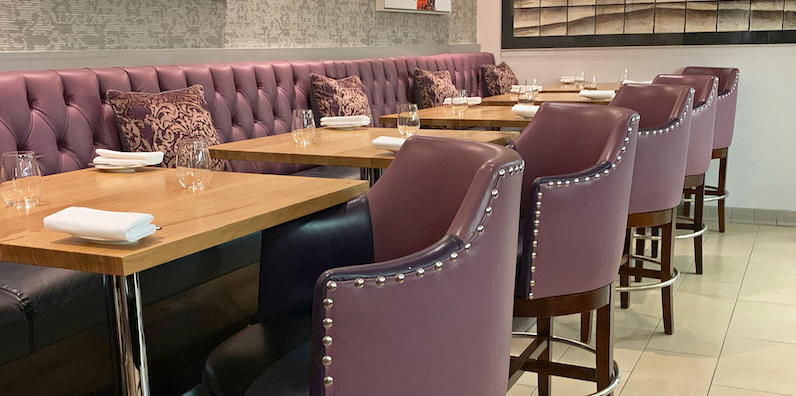
The Pass at South Lodge (above) operates with a relatively small number of covers –
At The Pass, he looks forward to extending the inspiration for the finest ingredients, while applying his craft to Japanese influences in cooking style and produce. Perhaps a greater focus on the tasting menu style previously only available on Friday evenings at Bonham’s (the trade there was mainly lunch with a customer base reflecting a need for modern European, classical cuisine, so perhaps those Friday dinner menus did not get the level of awareness they deserved.)
The Pass kitchen has access to wonderful dayboat fish from Cornwall and Sussex through to shellfish or the highest quality vegetables such as morels, peas, wild garlic or asparagus. Tom finds the iodine and minerality found in oysters, muscles, cockles, razor clams inspires him in other areas of cooking. As a means to deliver and enhance flavour, Seaweed is one of his favourite ingredients to work with, so as well as preparing three types of dashi as a basis for sauces and marinades, he uses seaweed butter (inspired by a Stephen Harris’ – of The Sportsman in Kent – slip sole dish roasted in seaweed butter) to finish his own fish dishes. The kitchen also maintains dried seaweed as powders or even pickled to enable wherever or however the flavour enhanced experience is relevant to a dish.
A theme of the six and eight course menu at The Pass at South Lodge will engage the customer throughout with clear, clean flavours with a core of umami based Japanese techniques.
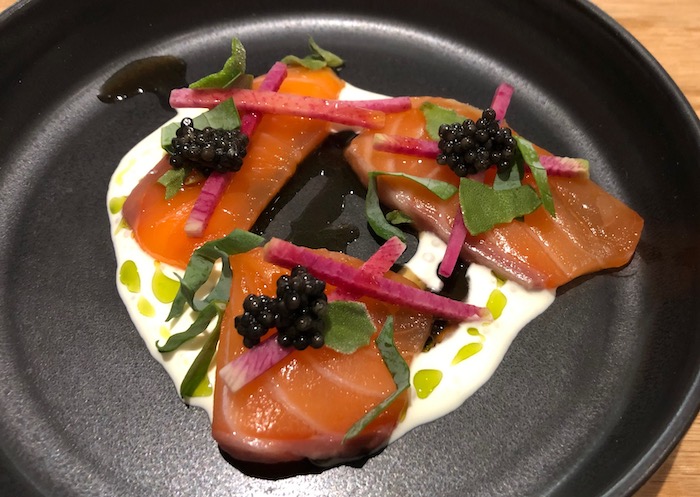
Indeed one dish sampled on the tasting menu was a Salmon dish (above). Tom analysed the dish as follows: “The Salmon (sustainably farmed from Norway) was cured in kombu, which was initially used for making dashi. This sat on the skin before a
In terms of general signatures, he suggests there are three branches, in the context of being given the opportunity to fully explore Japanese led cookery.
First, Tom employs Japanese influenced ingredients and flavours inspired by umami from creating several types of dashi in house.
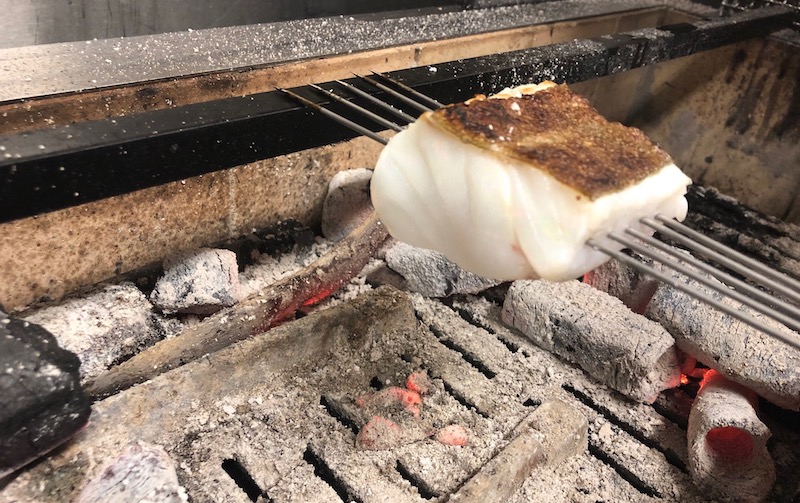
Second, the restaurant imported specialist Japanese Binchotan charcoal for an imported fire bricked grill (above, Konro Grill in the UK). The charcoal provides a beautiful flavour, which you might find in restaurants across Japan for cooking produce from eel to Wagyu beef. Binchotan charcoal has been produced for over 300 years by artisan makers in the Kishu district of Wakayama in Japan.
The flavour effect is clean, clear and non-smoky, in other words the antithesis of the classic smoky Big Green Egg barbecue. For economic reasons the charcoal is blended to make it last longer, but the Binchotan is extraordinary like porcelain and is said to have many positive health properties. The kitchen employs the classic technique used in Japan where meat or fish is grilled and skewered over the heat rather than direct on the grill.
Third, comes from the passion for the freshest highest quality ingredients providing the best possible flavours and textures. In the future, Tom’s believes his style may move increasingly toward apparent simplicity, where there may appear to be three components on a plate that produce a wonderful flavour combination that in fact masks a complexity in their creation. The chocolate dessert on the current tasting menu is a perfect example of that aim.
General plans for the future will be to develop and grow the team and continue to be considered about delivering tasting menus that will change with the seasons to keep both the customers coming back and the chefs motivated to cook and create. There will continue to be a five course offering at lunch time which is a little closer to a starter, main and dessert format at a lower price point.
Tom will also look to put on ‘four hands’ dinners with a guest chef on special evenings. A master in tempura, sushi or meat cooking and then maybe swap over and do something in Japan. He’d also like to do the same with chefs he admires in the UK. These are simple ways to enthuse customers, chefs on the team and expand the skill set all at the same time. The future is very exciting and “I’m delighted to be on board at the prestigious and food loving Exclusive Hotels UK Group.”



